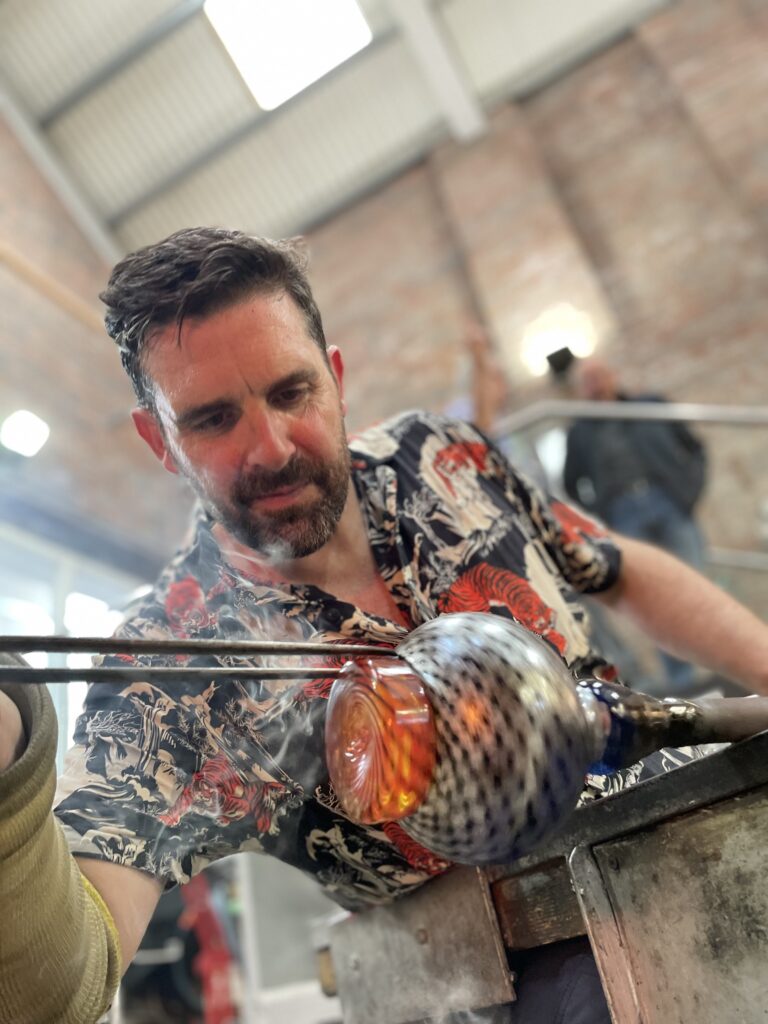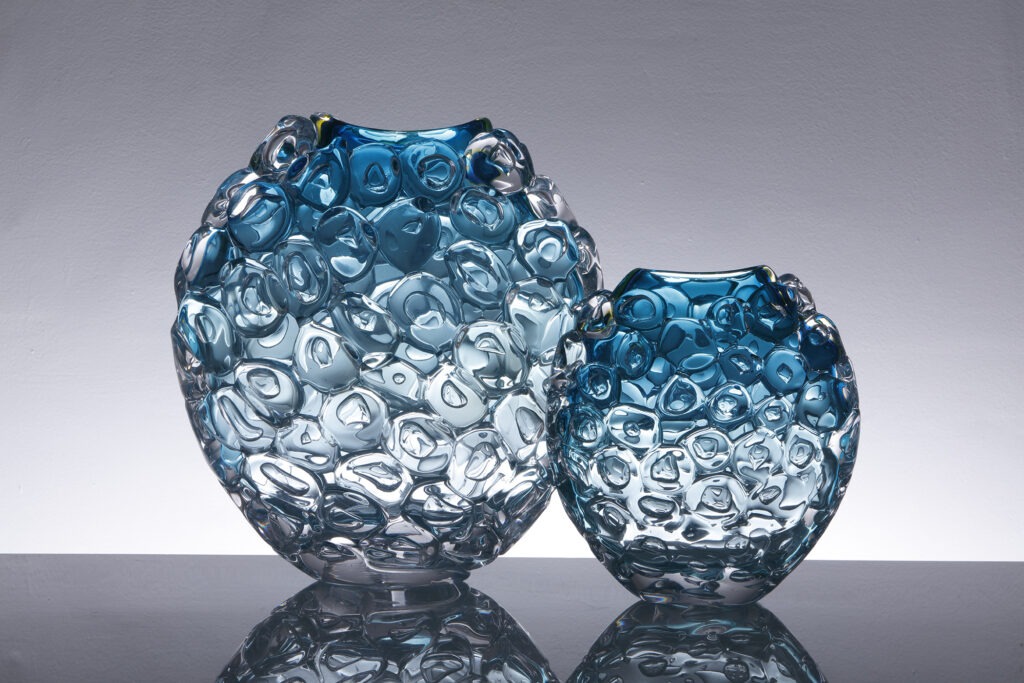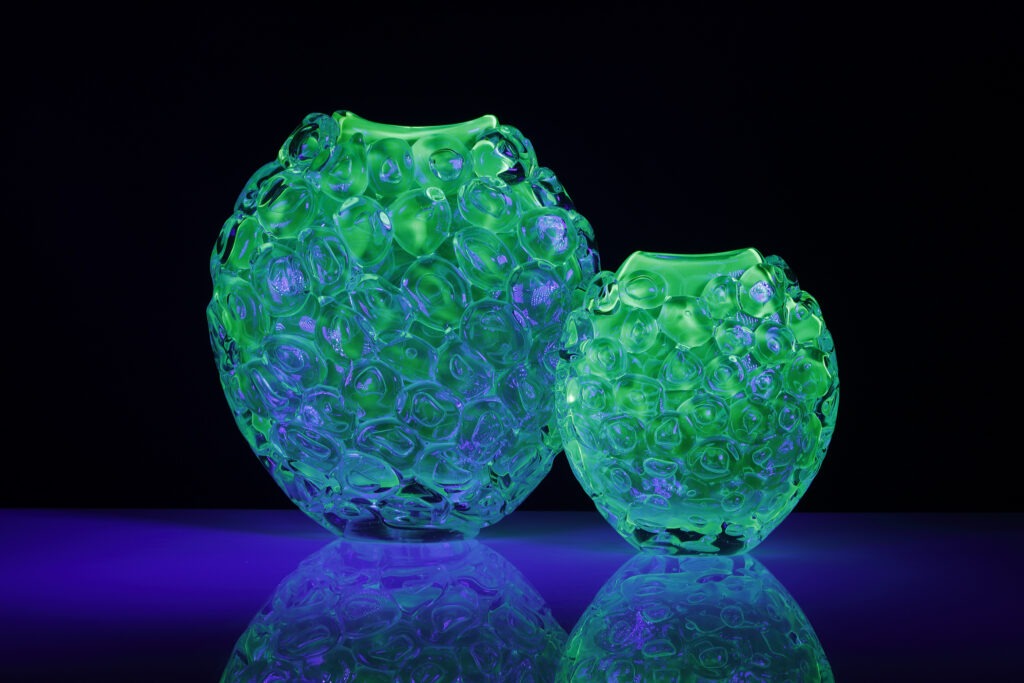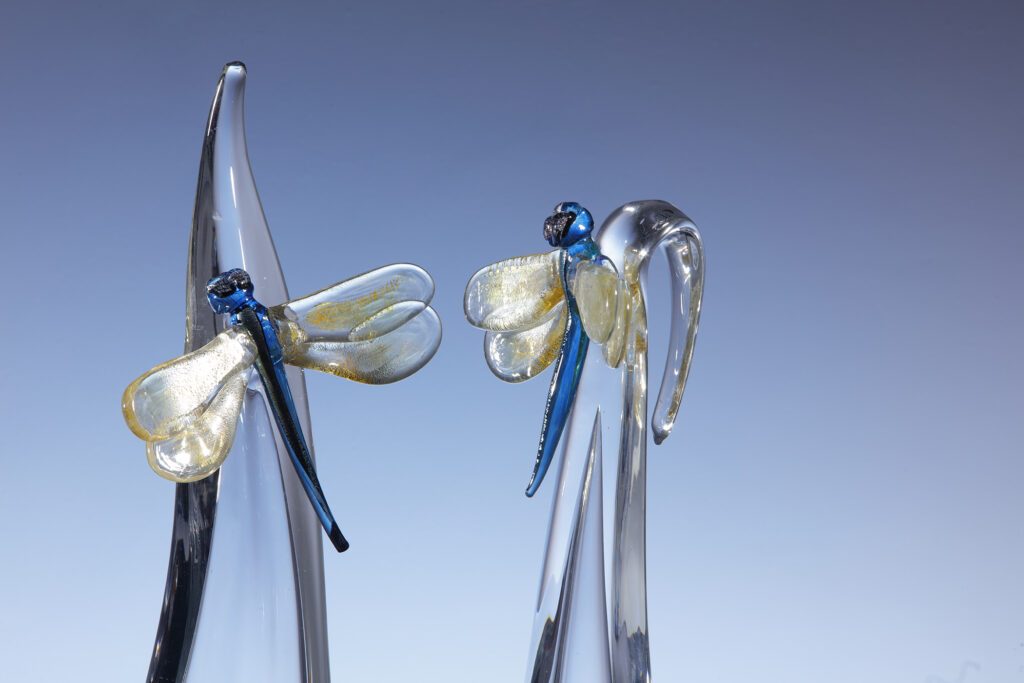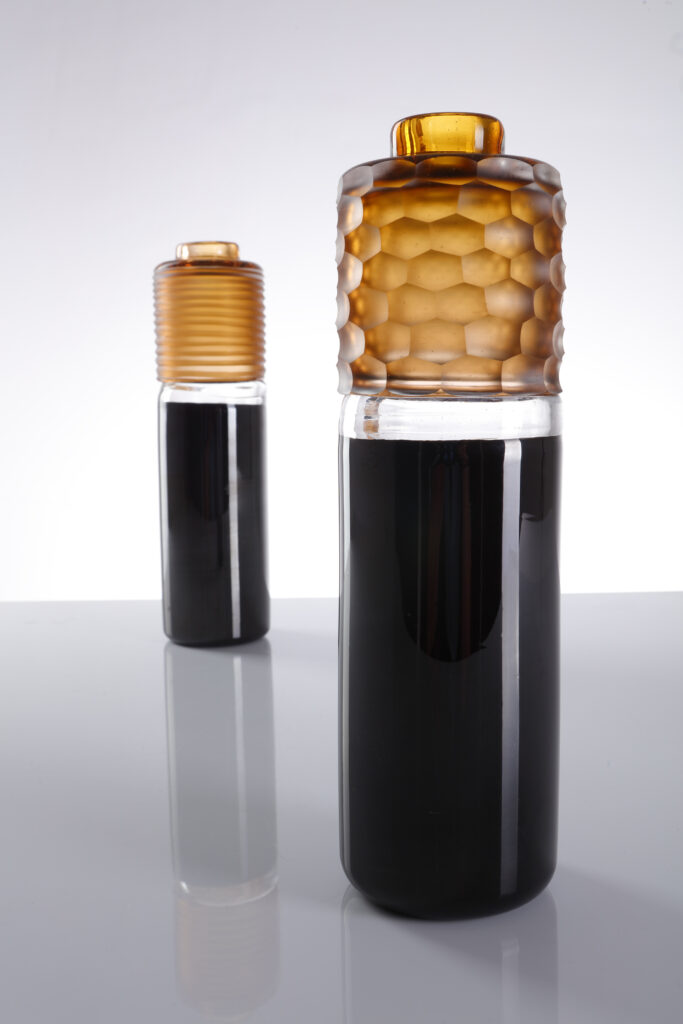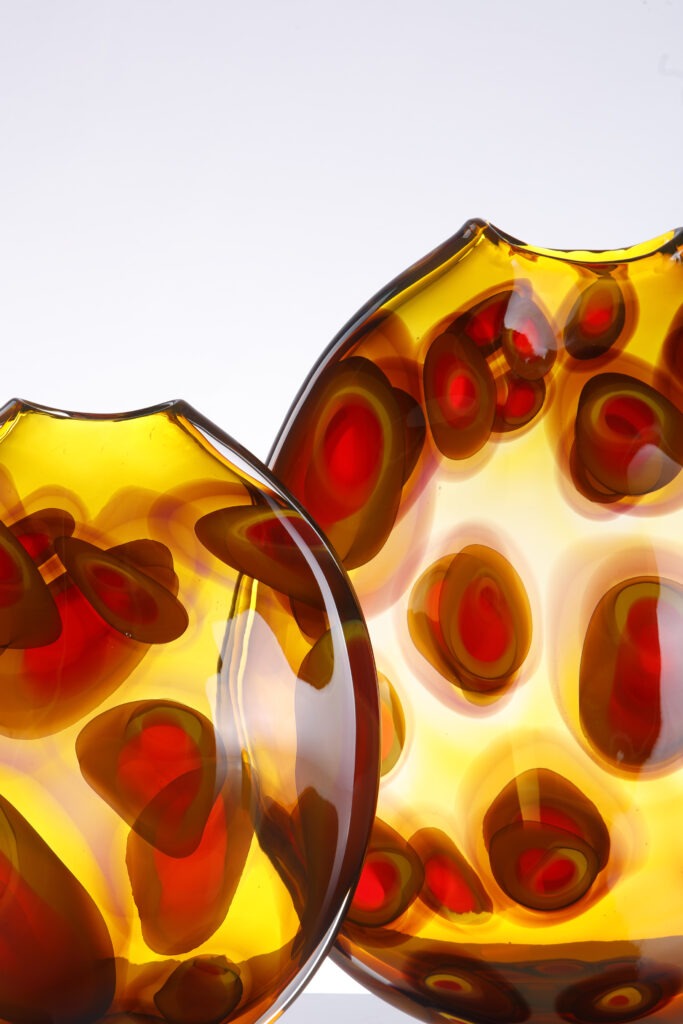How would you explain your organization in 300 words or less?
I have been a practicing professional glass artist for over 25 years. I run (alongside my wife) a small independent hot glass studio from Stourbridge Glass Museum. Visitors to the museum can watch me and my team creating unique pieces. My work is represented in numerous galleries around the UK. Many of my artworks are now in museum collections both in the UK, EU and the USA. My small highly skilled team of 4 specialise in producing custom made pieces developed closely with clients. The studio attracts not only individuals but clients ranging from interior designers and lighting companies to film prop and premier league football teams. My work is diverse and incorporates many aspects of hot glass including blowing, casting, sculpting and sand casting to name a few. We tackle many diverse, challenging commissions from public artworks to installations. We love a challenge and are always developing new designs. At various points throughout the year we schedule events to attract newcomers to the world of glass including have a go sessions allowing the public to get their hands on molten glass.
How is sustainability incorporated into your process?
Sustainability informs everything we do from manufacture right down to how we package the glass we send out. We are converting all of our hot glass studio to electricity. We have already dismantled the old gas furnace and installed an electric furnace and annealing oven. We are currently trialing the first electric reheating chamber of its kind in order to develop the model for a small scale studio practice. We have been granted listed building consent to fit solar panels to the roof of the studio. The scale of this installation is large enough to power the furnace during daylight hours from April through to September. With a funding application in progress our ambition is to have the solar panels installed by spring 2024.
Whilst addressing our means of manufacture we also reuse all of our clear glass, to be remelted down. Colored offcuts are saved and Terri Malcolm creates unique pieces with all the biproducts. We have started saving and sending excess coloured glass to other artists radically reducing our waste. We have ceased to use of plastics within our packaging ensuring that everything is biodegradable. We shred card from local business units and use this as loose fill to cushion our work in transit.
What was the reason you decided to pursue sustainable practices?
For years I have based my work on everyday observations in life, many of which have celebrated wonders of the natural world. I find that there is an endless source of inspiration in nature and it saddens me to think that our actions will mean this experience will not be there for future generations. I feel that in the future we will all be held accountable for the way we consumed energy in the past. The only way to mitigate this in my opinion is to reduce the impact our actions have on the environment and do so now.
When the energy crisis hit the UK I felt that this was the wake up call that I needed. It acted as a brutal reminder that as glass artist specialising in glassblowing we consume a great deal of energy. I decided the studio had to be better, it had to adapt or we would simply have to stop. It is fair to say that the economic pressures we faced during this time meant it would have been simpler to cease as a glass artist but a number of factors drove me onwards.
Firstly I still love what I do for a living. Secondly I am lucky enough to be surrounded by people all willing the studio to survive and thrive. My colleagues are like family and I didn’t want to disband the team. My daughter aged 15 at the time had shown an interest in hot glass. She began assisting for a few years and had picked up some good skills. She posed the question, “Will glassmaking still exist in the UK by the time I’ve finished my education?” That was a hard hitting question. I knew unless my generation started to look for solutions that the answer to her question would not be positive.
What would you like to see in the future for sustainability in art?
Sustainability needs to be at the starting point in all educational establishments globally to ensure that the next generation start with the correct working practices. I would love to see more assistance for those artist studios wishing to make positive changes. For those that have implemented positive change we wish to see them all thrive inspiring others to follow suit. We would like to see more platforms where you can only buy sustainable art combined with other incentives to become more sustainable. A strategy to educate consumers to invest in all things sustainable needs to run parallel with this. Whilst new innovations and improvements are being implemented it will require investment of both time and resources. Consumers need to help drive in the demand fro the sustainable.
What impact are you seeing & how do you measure success?
We have shared our journey so far with a YouTube video – https://youtu.be/8XGjhsJvM6M?

